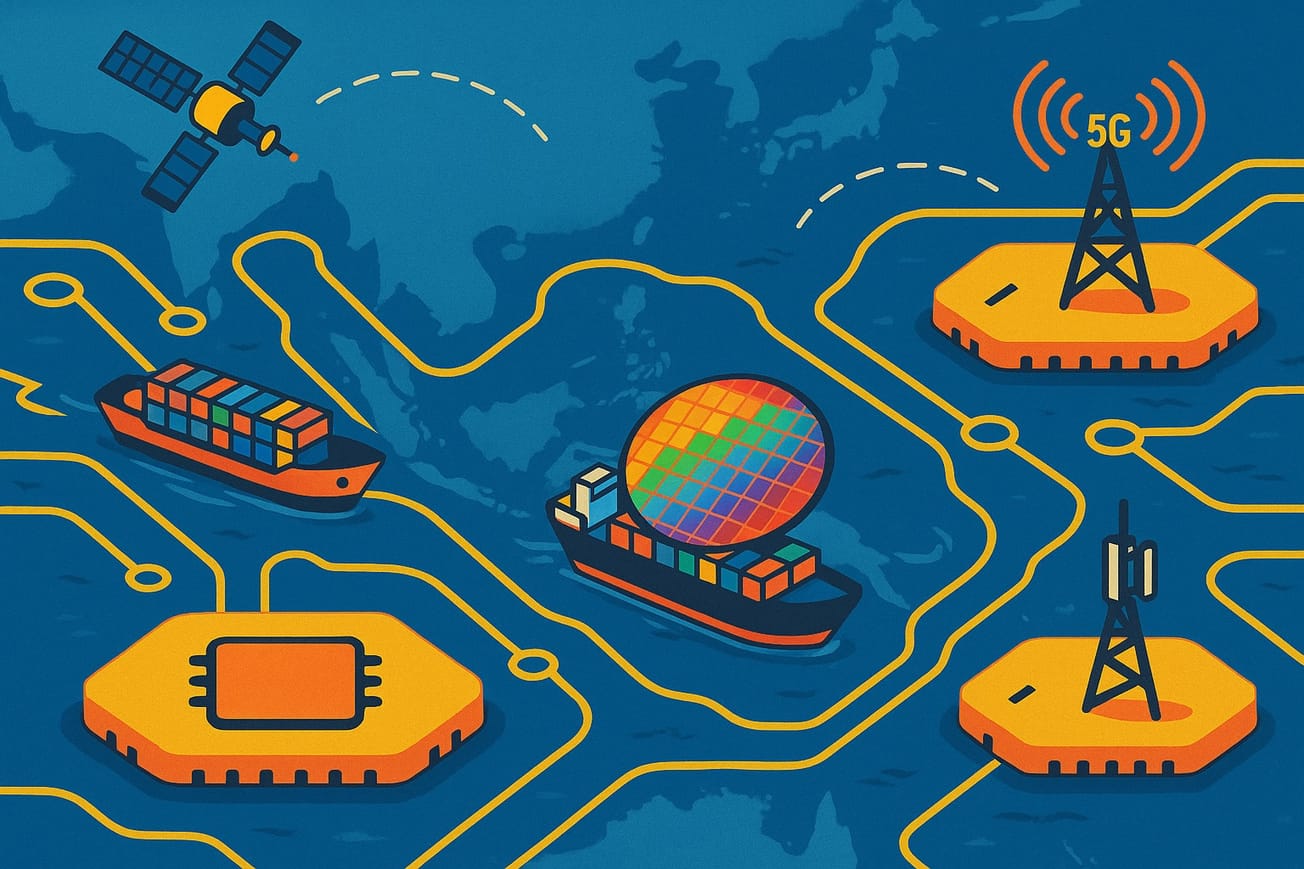
+ Operational and reputational risks for businesses in maritime shipping and Russian LNG have surged as Moscow consolidates Northern Sea Route control, intertwining energy policies with Ukraine-related sanctions led by the US and EU that target Novatek's Arctic LNG operations while avoiding immediate gas supply disruption.
+ On November 2, 2023, the US OFAC designated Arctic LNG 2 as a Specially Designated National, leading international partners to declare force majeure and abandon the project, and leaving Novatek struggling to fill financial and operational gaps. This highlights the broader risks in Russia's LNG supply chain, where specialized equipment and infrastructure are highly vulnerable to sanctions and disruptions.
+ Actors attempting to evade sanctions in the Russian LNG trade encounter major obstacles, as the limited LNG carrier fleet, heightened scrutiny, and remote Russian terminals hinder the viability of a shadow-fleet, making it hard to obscure ownership and operations, exposing participants to risk.
The current sanctions environment regarding Russian energy exports is proving to be dynamic, with rounds of trade restrictions crippling new and existing projects alike. With the Russian offensive in Ukraine unlikely to conclude in the short or medium term, the operational risk exposure for actors involved both directly and with the peripherals of Russian LNG production has considerably increased.
Sanctions Evolution
The operational and reputational risks facing any businesses in the maritime shipping or Russian LNG production and export industries have increased exponentially in the last couple of years. As Moscow has sought to consolidate its political control over infrastructure and the necessary peripherals to navigate and trade along the Northern Sea Route (NSR), businesses looking to capitalize on the economic advantages of a shorter route between the Eastern and Western hemispheres have been exposed to a large amount of risk. Primarily this has come through the entangling of Russia’s northern energy policies with the sanctions response to its invasion of Ukraine.
Sanctions have long been a vehicle through which both state and non-state actors can seek to influence geopolitics. Whilst often representative of a different kind of conflict, actions ranging from the seizure of assets to the imposition of restrictions on the import and export of certain resources and technologies provide a method to inflict economic damage and weaken opposition actors without the need to engage direct force.
Seeking to prevent the development of future capabilities whilst avoiding disruption to existing supplies [has] led to asymmetries in the sanctions posture across the Atlantic.
Nowhere has this been more publicly apparent than in regard to Russia. Over the past decade, both Europe and the US have leveled sanctions toward Moscow’s energy sector in successive attempts to curb one of the state’s largest revenue streams. Following the Russian annexation of Crimea in 2014, the US and EU banned the provision of critical technologies to the Russian oil sector and restricted investment in several leading Russian energy companies. With the primary aim of seeking to prevent the development of future capabilities whilst avoiding disruption to existing supplies, the abandonment of this principle in subsequent years by European states finding themselves increasingly reliant on the Kremlin’s oil and gas led to asymmetries in the sanctions posture across the Atlantic.
By 2022 it became clear to European leaders that transitioning away from energy dependence on Russia was necessary in order to weaken the Russian war effort and subsequently help protect the continent’s territorial sovereignty. This has proven by no means to be an easy task, as with economic and energy security questions front of mind for many of Europe’s political elite, much of the decision-making has failed to reach consensus through objections by those sympathetic to the Kremlin and those vehemently opposed to Russian aggression alike. In spite of this, both the US and EU have leveled several rounds of sanctions aimed at Russia’s energy sector, with recent packages being the first to restrict Russian LNG operations.
These restrictions have evolved asymmetrically. Novatek, Russia’s LNG export giant and owner/operator of both the Yamal LNG and Arctic LNG 2 projects within Arctic waters, has been the primary subject of US-based sanctions. The strategy here has been based around curtailing future production capabilities rather than risk upsetting the existing gas market, meaning that the focus has been on the Arctic LNG 2 plant as opposed to the existing gas capacity being produced and traded out of the Yamal plant. The former, which only became partially operational in December 2023, has faced considerable disruption due to Washington targeting the various engineering and construction companies providing the necessary and peripheral technologies. In contrast the EU, which has had a far greater level of energy interdependence with Russia, has focused on limiting the Kremlin’s ability to profit off of the sale of LNG rather than seeking to halt production. Falling short of banning the purchase of the fuel, the bloc’s first sanctions on the industry instead sought to prohibit the use of EU ports for transshipment onto third countries, forcing Moscow to seek alternative routes and infrastructure.
Current Sanctions Environment
On 2 November 2023, the US Office of Foreign Assets Control (OFAC) designated the Limited Liability Company Arctic LNG 2 as a Specially Designated National (SDN). This operating vehicle for the Arctic LNG 2 project was quickly isolated from its international partners and shareholders, with France’s TotalEnergie (10%), China’s CNOOC (10%) and CNPC (10%), and Japan’s JOGMEC (7.5%) and Mitsui (2.5%) all since declaring ‘force majeure’ on their relevant offtake contracts. This has left Novatek, and its 60% stake in the project, with financial and operational holes it is struggling to fill. Close links to the Kremlin and its understanding of the geostrategic importance of maintaining and generating revenue from LNG has helped insulate the local operator somewhat. However for Arctic LNG 2’s international partners, it is clear that sanctions on direct involvement with the project constitute risk exposure beyond any accepted tolerance.
Whilst these sanctions on the Arctic LNG 2’s operating vehicle have certainly hampered production on the Gydan peninsula, the risk environment expands well beyond the project’s shareholders. The extraction and shipment of LNG is a highly technical process, exacerbated in this case by the conditions in the locations of Russia’s natural gas deposits. Each individual train requires the fabrication and construction of modules which are then assembled and subsequently transported to the relevant terminal. Specialist vessels are then required to store and transport the fuel to a select few onshore facilities in receiving countries before the gas can be utilized. Unlike comparable extractive processes for other resources, the highly specialized equipment and infrastructure required makes the supply-chain susceptible to disruption via sanctions or other means.
This has been displayed by the widening US sanctions regime, with a combination of primary and secondary sanctions leveled at those involved with many aspects of Russian energy production. Malte Humpert, an Arctic geopolitical specialist and investigative journalist, has been tracking the implementation and effects of these sanctions across the various industries both involved directly and with the peripherals of LNG. His work highlights the fragility of several sections of the supply chain, with only a handful of companies possessing the capabilities to construct vital equipment across the extraction, liquefaction, and transport of Russian gas.
Operational Risks in the Maritime Domain
Sanctions levied by the US and UK in February 2024 show this in action. The targeting of specialist Arc7 LNG icebreakers, a key component in the transport of LNG from the Utrennye terminal within the Arctic Circle, is central to curtailing Moscow’s export capabilities. These sanctions were designed to prevent the transfer of South Korean shipbuilder Hanwha’s newly-constructed vessels to Novatek, whilst also ceasing any domestic production through the Zvezda shipyard. Further restrictions were targeted at Novatek’s Belokamenka assembly yard, where prefabricated modules come together to create the gravity-based systems (GBS) required to complete production trains. This comprehensive effort to disrupt both essential and peripheral maritime components has altered the operational risk environment for many actors with involvement in the Russian LNG trade.
Organizations seeking to continue involvement in spite of these restrictions have suffered both operationally and reputationally. Singapore-based Red Box Energy Services, the owner/operator of the highly specialized Polar Class (PC3) heavy lift vessels Audax and Pugnax, transported two structures from the Chinese port of Penglai to Belokamenka along the NSR earlier this year. Despite CEO Philip Adkins insisting that the cargo was simply ‘generic steel structures’ and no sanctions were violated, independent LNG Operations Specialist Mehdy Touil has identified the structures as TMS-003 and TMS-004, refrigeration modules which are core components for Novatek’s Arctic LNG 2 Train 2.
This comprehensive effort to disrupt both essential and peripheral maritime components has altered the operational risk environment for many actors with involvement in the Russian LNG trade.
This clear breach of sanctions resulted in Red Box taking a reputational hit after the Financial Times published an investigative piece following this transit, shining a light on the transaction and the clouded past of their executive leadership. Months later, Singaporean authorities declined to renew the CEO’s work visa, forcing him to step down from his position, whilst OFAC has targeted both Audax and Pugnax with sanctions. With Automatic Identification System (AIS) data placing both vessels moored and at anchor in Singapore and off the Chinese coast respectively, it is clear that any international actor seeking to engage with the maritime elements of the Russian LNG trade runs the risk of serious adverse impact on key assets and core operations.
Further to this, transit of the NSR is difficult and relies upon existing infrastructure. Even ice-capable ships such as the PC3 or Arc7 classes are often accompanied by dedicated support vessels from Rosatomflot’s nuclear icebreaker fleet. A necessity for all but the most equipped cargo ships traversing the NSR outside of the summer months, these have been the subject of separate sanctions, including the FSUE Atomflot maintenance base which is essential for continued long-term use. Pre-sanctions, the availability of icebreaker escorts was conditional on the priorities of the Russian fleet, but since these vessels can no longer conduct business with US or EU entities, the options for foreign operators have made the route an effective ‘no-go’ for non-Russian traffic. Beyond this, and regardless of the time of year, the peripheral infrastructure that is relied upon for transiting the NSR, such as refueling points, is owned by the Russian state and often has dual military applications. Any entity seen to be helping fund the Russian war effort in this regard has to navigate the reputational implications and subsequent exposure to risk from this additional vector.
The Viability of an LNG ‘Shadow Fleet’
Actors seeking to continue involvement in the Russian LNG trade, and thereby financially support the Kremlin, may seek to mitigate this risk by attempting to evade sanctions. Many parallels have been drawn to the methods utilized by those with similar aims trading oil, however, the nature of exporting Russian LNG casts doubt over the viability and effectiveness of a so-called ‘shadow-fleet’ for Russian LNG.
To understand why this may be the case, it is crucial to recognize the processes and factors that contribute to the successful evasion of sanctions on other resources. When ships seek to sail ‘under the radar’ transporting commodities, the first step involves the manipulation of their AIS. This is a short-range coastal tracking system designed to identify and locate vessels, and is mandated on all vessels of over 300 gross tonnage. Manipulation of an AIS signal is done primarily in one of two ways. Firstly, a ship may disable its AIS broadcast, transmitting no signal and disappearing off of relevant maps. ‘Going dark’ in this manner poses not only physical risks to the vessel and others in the area, but also is somewhat crude and ineffective due to the comprehensive monitoring of AIS data by relevant authorities. In this instance, the risk of increased attention often makes this method unsuitable for those seeking to evade sanctions.
The nature of exporting Russian LNG casts doubt over the viability and effectiveness of a so-called ‘shadow-fleet’ for Russian LNG.
A more effective method involves the spoofing of AIS signals. By altering the transmission of location data to an area the ship is not operating in, vessels can engage in illicit activity whilst appearing to be acting normally. Previously, success in using these tactics has been dependent on misdirection and safety in numbers, however the isolated location and increased scrutiny on Russian LNG terminals renders these factors ineffective. On 1 August 2024, satellite imagery confirmed the presence of the LNG carrier Pioneer at Arctic LNG 2, seemingly undertaking delivery of gas from Train 1 at the Utrennye Terminal. At the same time, AIS data had the vessel located off the Norwegian coast in the Barents Sea.
This attempt at concealing Arctic LNG 2’s first delivery whilst under restrictions has been ineffective. The comparatively small global LNG carrier fleet, combined with stringent terminal monitoring and increased scrutiny on Russian energy exports, means that those seeking to evade sanctions are not afforded the same concealment advantages that may exist with oil. Whilst Novatek will likely continue to attempt illicit LNG deliveries in the future, key vulnerabilities in Moscow’s strategy in the ‘dark’ trade of Russian LNG have been exposed.
A key element of creating a successful shadow-fleet is the ability to obfuscate the true ownership of a carrier as a means to circumvent sanctions. Since the 2014 onset of conflict in Ukraine, the Kremlin and its allies have relied upon established third parties to facilitate the movement of commodities and technologies in places and with partners prohibited by sanctions. The UAE, with its long history as a transshipment hub for goods heading to sanctioned Iran, has been a willing partner in this regard. Over the past 18 months, various buyers with links to Russia have transferred ownership of over 50 LNG transit vessels to UAE-based entities, many with similarly clouded ownership structures. With similar methods having seen success in the movement of sanctioned Russian oil, attempts to establish a complex network of maritime operations appear critical to Moscow’s current and future LNG strategy.
The use of such tactics has been on display recently. On July 18, the LNG Carrier North Sky took on volumes from Novatek’s Yamal LNG Sabetta Terminal, having recently switched ownership to a Dubai-based entity. The vessel, one of four Arc4 carriers with the ability and relevant permissions to traverse the NSR, has subsequently departed in the direction of Europe. Mindful of the EU’s recent ban on the use of ports for third-party transshipment of sanctioned LNG, the North Sky represents a concrete attempt to subvert restrictions via vessels shrouded in secrecy.
The primary operational risks associated with Russian LNG exports are largely contingent on the effectiveness and sustainability of a shadow fleet, both in the short and medium term. Moscow’s commitment to this strategy seems concrete. That it is physically possible for ships of disputed origin to navigate the NSR and take on sanctioned LNG has been proven, although the limited number of import/export points through which LNG can travel casts doubt over whether these actors can avoid prolonged scrutiny. The length of contracts and the small pool of high-profile and reputable buyers for natural gas means that those sailing in spite of this would be doing so in the knowledge that they are selling to organizations that lack transparency. LNG cannot be transported in a vacuum, and any entity operating within this sanctioned environment is opening themselves up to risk from multiple vectors, and at the second and third tiers of the supply chain. Whilst the long-term viability of a shadow-fleet of LNG tankers has yet to be seen, association with the Russian LNG trade is likely to continue to be subject to increasing operational and reputational risk driven by geopolitical pressures.









